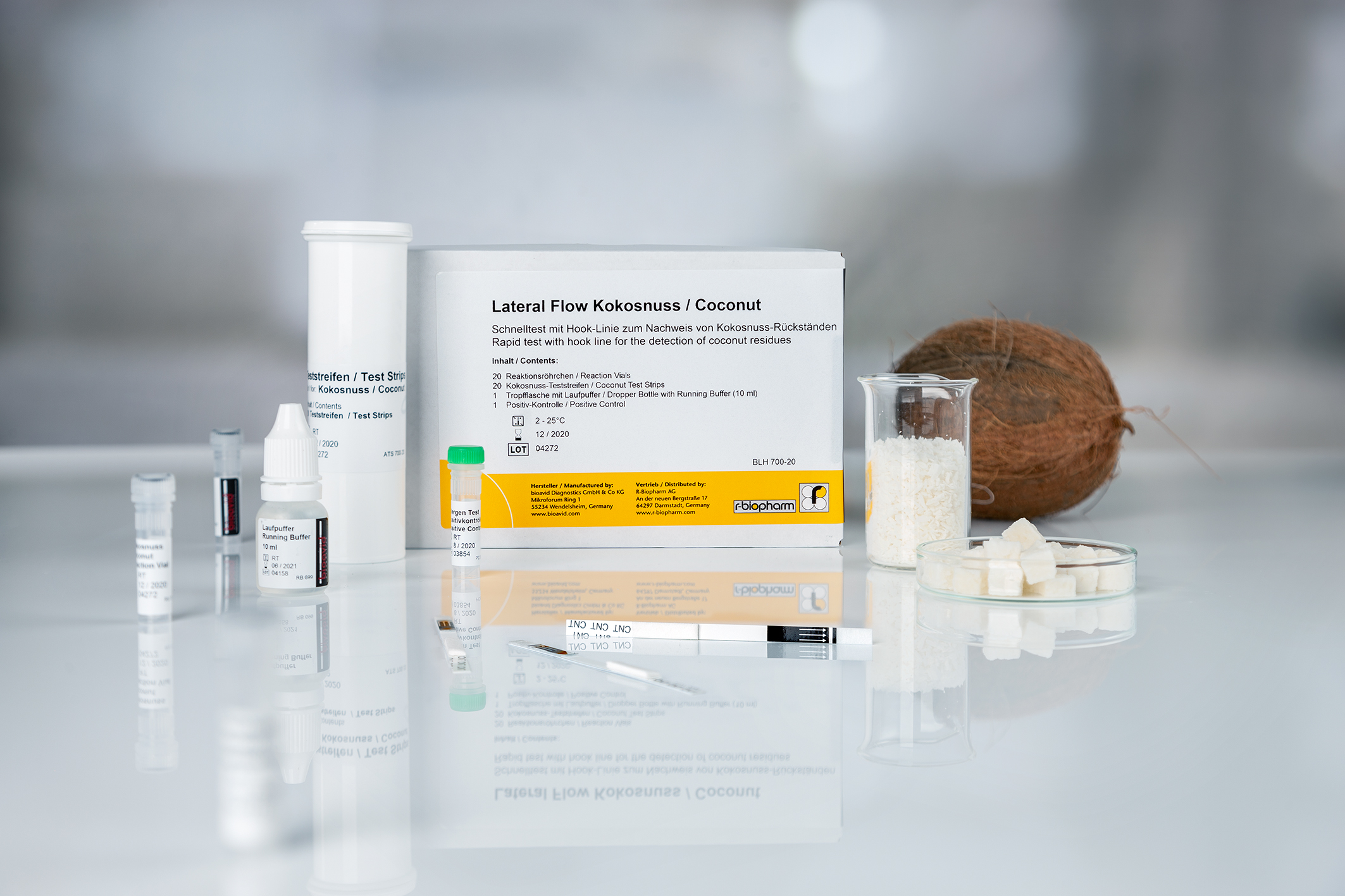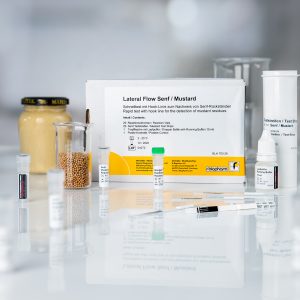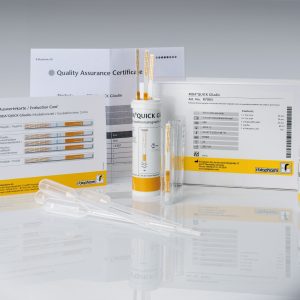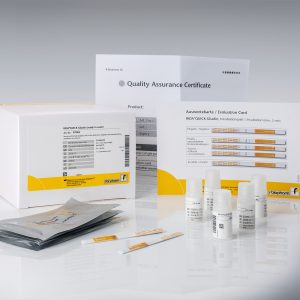Description
Intended use:
The Lateral Flow Coconut incl. Hook Line from Bioavid is an immunochromatographic test for the qualitative detection of coconut residues in environmental samples (e.g. in food production lines), CIP-water and food samples. The assay is applied for the detection of small amounts of coconut contaminations.
***NEW***
Unfortunately, very high amounts of an analyte in the sample can lead to falsely lowered or negative results – called the hook effect. The new dip-sticks will include an additional line, the hook line, in order to detect this effect. For now, the new test (BLH700-20 Lateral Flow Coconut incl. Hook Line) will not replace the old one without a hook line (BL600-10 / BL600-25 Lateral Flow Coconut), but it is an additional product offer with new functionality.
General Information:
The coconut palm tree is a native of the tropics. The fruit (seed) of the palm is known as the coconut. The coconut has great economic value, as the outer fibrous husk can be used to make ropes and mats, the white inner flesh can be eaten and the milk can be drunk. Coconut can be bought fresh or as coconut milk, coconut water, creamed coconut or desiccated coconut. It can be used as an ingredient in baking, ice cream, breakfast cereals and confectionary. It is widely used in South-East Asian cooking. A member of the Anaphylaxis Campaign reported finding coconut oil to be an ingredient used to cook crisps in France. Coconut derived products are also added to many food (incl. cakes, chocolates), some infant formulae and to cosmetics and grooming products (shampoos, moisturizers, soaps, hand wash, etc.). However, allergic reactions to eating coconut are relatively rare. Coconut contaminations in food possibly elicit hypersensitivity in sensitive persons.
Food production lines have to be free of residues to prevent these allergic reactions. The effectiveness of cleaning can be verified by using a Lateral Flow method against coconut.
In 2006, the FDA added coconuts as a tree nut to the major food allergens list (Food Allergen Labeling and Consumer Protection Act of 2004 (FALCPA)).
Benefits:
- Extended functionality: included hook line for safe identification of high positive samples (> 10,000 ppm).
- More precise statement in a bigger range than conventional test strips (valid results in the range of 1 – 10,000 ppm).
- A fast, reliable and easy-to-use dip stick system detecting coconut in production lines, raw materials and processed food (results in 10 min).
- More information and benefits can be found on this flyer.
Accessories:
- bioavid Swabbing Kit (plastic)
- bioavid Swabbing Kit (wood)
- bioavid Absorbent Buffer
- bioavid Sample Buffer
| Article Numbers | BLH700-20 |
|---|---|
| Test format | 20 x test strips for 20 determinations |
| Sample preparation | – Swabbing method: cleaning surface with pre-treated swab, wash out the swab and measure. – Food assay: homogenise food sample, filter, measure. – Liquid samples: no preparation. |
| Incubation time | 5 min Room temperature |
| LOD (Detection limit) | – Food samples: 1 ppm – Swabbing: ≤ 2 µg – CIP-water: 1 µg / ml |
| Cross reactivity | 13 matrices tested without cross reactivity.
Tested matrices with cross reactivity: – Sesame: 0.1 % |
| Detected analyte | Coconut residues |
| Evaluation | Visual evaluation |
| External link I URL | Bioavid Homepage – Documents for Coconut |
| Links | SOP Verification for new/unknown solid samples |
|---|---|
| MSDS |




